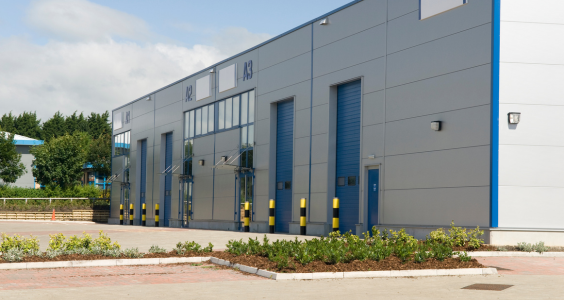March 2024
It’s a trend we have noticed for a while now – we have been doing Depreciation Schedules on commercial and residential properties for over 20 years, so we pick up on trends.
Lots of investors start out with residential property and move into commercial. It’s almost like a residential property is investing with training wheels. We are all familiar with residential property, so it’s where we start.
Then many investors graduate to commercial property. Perhaps it is something you have thought about given you likely already have a residential rental property? Investors who move into commercial properties often wonder what took them so long.
Many get out of residential completely and just focus on commercial. Why might that be?
With residential property, the odds are increasingly stacked in the tenant’s favour. Leases tend to be 12 months at the most, owners need to pay council rates, insurance costs, often some utilities. And if the doorbell stops working, it’s your problem.
Let’s look firstly at the pros and cons of commercial properties.
Then, what are the types of commercial properties investors dabble in first?
And finally, how does depreciation differ with commercial properties?
Before we dive in, if you want to make an enquiry about a new commercial (or residential) Depreciation Schedule, call us on 1300660033, or enquire online.
 The pros of investing in commercial properties
The pros of investing in commercial properties
In a general sense, the tenant in a commercial property is running a business from there so dealing with them is different from dealing with residential tenants and the leases are more complicated. It’s an idea to engage a commercial leasing agent as a go between – self managing a commercial property, your first one at least, would not be wise.
Because the tenant is running a business, they tend to take good care of the property – at their expense. And if the doorbell needs fixing, they’ll probably do it.
Commercial tenants often make improvements to the property at their expense to better enable them to run their business.
Your outgoings are something commercial tenants are accustomed to paying. Council rates, insurance, strata fees etc. Imagine not having to pay any of that.
Commercial leases are longer, which stands to reason – if somebody is going to go to the effort of establishing a business in a property they’ll want to stay there. Three years would be considered a short lease. Often they are five years or longer with option periods after that where tenants and landlords can agree on terms to extend the lease for another period.
That all sounds pretty good, huh. But for every swing, there is a roundabout. So best read on.
 The cons of investing in commercial property
The cons of investing in commercial property
The average price of entry can be higher than it is with residential property. And you might not be able to borrow as high a percentage of the property value compared with residential property. And the interest rate on the money you borrow will likely be higher.
Gulp.
Oh, and replacing a tenant can be more difficult when they move on. Offices, shops, small factories, all can sit vacant for months sometimes. And when you get a new tenant, it’s common for the landlord to give them a rent free period while they settle in and get established.
And they’re not as ‘liquid’. That means they can be harder to sell than residential property because there are fewer buyers.
But despite these cons, people are increasingly turning to commercial property. But what sort of commercial property? There are many types to choose from.
 What type of commercial properties do first time investors gravitate to?
What type of commercial properties do first time investors gravitate to?
We have done Depreciation Schedules on every imaginable commercial property. Everything from small shops to large farms. We even did a fish farm once.
Small offices in strata buildings are a popular choice for investors starting out in commercial property. They are not all that different from an apartment, so they’re easy for people to get their heads around.
And those strata fees in most cases will be paid by your tenants.
You’ll get a longer lease and likely have fewer headaches than with an apartment.
Then there are shops, either standalone ones or those in shopping centres. Sometimes these are bought by people so they can run their own business out of them, but let’s say you are just the landlord.
Tenant turnover can be a problem with shops – retail and hospitality are tough gigs. We all know shops that sit empty for ages and ones where tenants turn over regularly – it’s as if some locations have a curse on them.
And most of us have seen shops where there is a sign on the door saying the landlord has taken back the property. It’s a lot easier for a landlord to move against a commercial tenant compared with a residential one, but it’s still a big inconvenience. Sure, you might have locked out the tenant quickly, but perhaps being the owner of a chicken shop is not something you had planned.
Then there are small factories in strata complexes. Gee, we have a lot of clients buying these to rent out – often in their SMSFs. The entry point is often manageable and the buildings very simple – usually four walls with a mezzanine. Small businesses rent them sometimes just for storage. These are the properties we see more first time commercial investors target.
 How does depreciation differ with commercial properties?
How does depreciation differ with commercial properties?
The biggest difference is that the changes to depreciation in 2017 – gee, it seems a long time ago now – did not affect commercial properties.
Second hand Assets (also known as Plant and Equipment) in commercial properties can be depreciated. With second hand residential properties, it is just the buildings that can be depreciated.
That means if you buy a 10 year old commercial property, you depreciate the building and the air con, hot water, floor coverings, alarms, fire services etc. And if it’s in a strata complex, there is depreciation beyond the building – we wrote about this recently in a newsletter to our affiliate partners.
And if the building is used for ‘manufacturing’, you get to claim the building write-off at 4% as opposed to 2.5%.
So in general, there is more depreciation available in commercial property.
 Has this email reminded you about an investment property – commercial or residential – you need a Depreciation Schedule for?
Has this email reminded you about an investment property – commercial or residential – you need a Depreciation Schedule for?
Make a no-obligation enquiry online and rely on our 20-plus years of experience in estimating depreciation returns.




 What gets missed with shops and offices?
What gets missed with shops and offices? What gets missed with factories and warehouses?
What gets missed with factories and warehouses? What gets missed with farms?
What gets missed with farms? What gets missed with residential properties?
What gets missed with residential properties?

